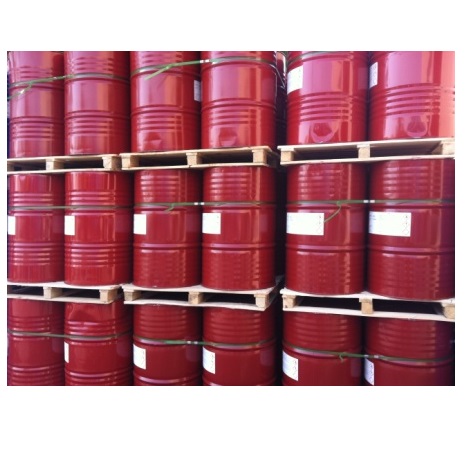Description
Dealer: Stars Management DMCC
Brand: BAYER/BASF
Product Code: Insulation Foam
Desmodur 44 V20L is a liquid, dark brown mixture of diphenylmethane-4,4’-diisocyanate (MDI) with isomers and homologues of higher functionality. It is used in conjunction with polyols to produce rigid polyurethane foams.
Directions for Processing
Desmodur 44V20 L may undergo partial crystallization at temperatures below 0 °C. The product can, however, be brought back into the liquid state by heating the entire contents of the drum for a short time to a maximum of 70 °C, although this may lead to an increase in the solids content.
Drums including empty ones should always be kept tightly sealed. The product should never be allowed to come into contact with water, which reacts with
Desmodur 44V20 L to form polyureas and carbon dioxide. Contact with water in any form (damp drums, solvents containing water, moist air) must be prevented not only during storage, but also when removing material from drums and during processing. Failure to do so may lead to a dangerous build up of pressure in tanks and drums due to the generation of carbon dioxide. In addition, polyureas forming in Desmodur 44V20 L can cause solids to separate out, leading to blockages in the filters, pumps and pipelines of the processing equipment and resulting in production problems.
Persons who suffer from hypersensitivity of the respiratory tract (e.g. asthmatics and chronic bronchitis sufferers) should avoid handling this product. Symptoms affecting the respiratory tract can also occur several hours after overexposure. Dust, vapors and aerosols are the primary risk to the respiratory tract.
Description of first aid measures
General advice: Soiled, soaked clothing and shoes must be immediately removed, decontaminated and disposed of.
If inhaled: Take the person into the fresh air and keep him warm, let him rest; if there is difficulty in breathing, medical advice is required.
In case of skin contact: In the event of contact with the skin, preferably wash with a cleanser based on polyethylene glycol or with plenty of warm water and soap. Consult a doctor in the event of a skin reaction.
In case of eye contact: Hold the eyes open and rinse with preferably lukewarm water for a sufficiently long period of time (at least 10 minutes). Contact an ophthalmologist.
If swallowed: DO NOT induce the patient to vomit, medical advice is required.
Most important symptoms and effects, both acute and delayed.
Notes to physician: The product irritates the respiratory tract and may trigger sensitization of the skin and respiratory tract. Treatment of acute irritation or bronchial constriction is primarily symptomatic. Extended medical treatment may be required depending on the degree of exposure and the severity of the symptoms.
Fire-fighting measures
Suitable extinguishing media: Carbon dioxide (CO2), Foam, extinguishing powder, in cases of larger fires, water spray should be used.
Unsuitable extinguishing media: High volume water jet
Special hazards arising from the substance or mixture: Burning releases carbon monoxide, carbon dioxide, oxides of nitrogen, isocyanate vapors and traces of hydrogen cyanide. In the event of fire and/or explosion do not breathe fumes.
Fire in vicinity poses risk of pressure build-up and rupture. Containers at risk from fire should be cooled with water and, if possible, removed from the danger area.
Advice for fire-fighters:
During fire-fighting respirator with independent air-supply and airtight garment is required.
Do not allow contaminated extinguishing water to enter the soil, ground-water or surface waters.
ACCIDENTAL RELEASE MEASURES
Personal precautions, protective equipment and emergency procedures: Put on protective equipment. Ensure adequate ventilation/exhaust extraction. Keep unauthorized persons away.
Environment related measures:
Do not flush into surface water or sanitary sewer system.
Methods and material for containment and cleaning up:
Remove mechanically; cover the remainder with wet, absorbent material (e.g. sawdust, chemical binder based on calcium silicate hydrate, sand). After approx. one hour transfer to waste container and do not seal (evolution of CO2!). Keep damp in a safe ventilated area for several days.
APPLICATIONS:
Internal wall , External wall insulation, Roof , Floor, Below Grade foundation, Slab on grade, other uses
